From Pure Windows 7 to Linux Dual Boot
-
@Tsaukpaetra said in From Pure Windows 7 to Linux Dual Boot:
@BernieTheBernie said in From Pure Windows 7 to Linux Dual Boot:
but not the management studio.
Yeah, it sucks balls it's apparently too complicated to port over.
Presumably as SSMS is built on VS, it's more that VS is too complicated to port over.
Or not enough people would use it and so they just don't want to.Azure Data Studio works on Linux though.
-
@loopback0 said in From Pure Windows 7 to Linux Dual Boot:
Or not enough people would use it and so they just don't want to.
The proof is that nobody is using it now, so why bother porting it

-
@Tsaukpaetra said in From Pure Windows 7 to Linux Dual Boot:
@BernieTheBernie said in From Pure Windows 7 to Linux Dual Boot:
@BernieTheBernie said in From Pure Windows 7 to Linux Dual Boot:
Oddly, RDP (xrdp on kde standard) feels a little sluggish. Much slower than the Windows 11 machine.
"A little sluggish". Uhm, actually terrible.
 Why tf is it so sluggish?
Why tf is it so sluggish?
When I move a window around on the screen, the Windows 11 machine shortly bursts data sending to about 1 Mbps. For a moment only.
But the Debian 12 machine... sends 6 Mbps for several seconds.
Why? But why?Weird, I don't remember that, I might have to spin up a machine to see what happens on mine...
Oh damn. What the heck happened? I could have sworn they had the x264 encoding working at some point...
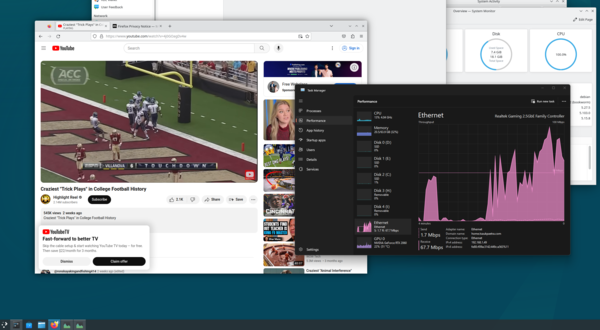
Playing a random YouTube via XOrg. Ends up at like 5fps, most likely due to CPU limitations. It uses less if you use 16-bit color (naturally), but I am unpleasantly surprised.
Whelp.

-
@BernieTheBernie said in From Pure Windows 7 to Linux Dual Boot:
So: postgres. Installed the server, then phppgadmin. Tried to open the latter - and can't find it.


Yeah apparently you're supposed to just intuit that it's installed under the default apache installation under http://localhost/phppgadmin
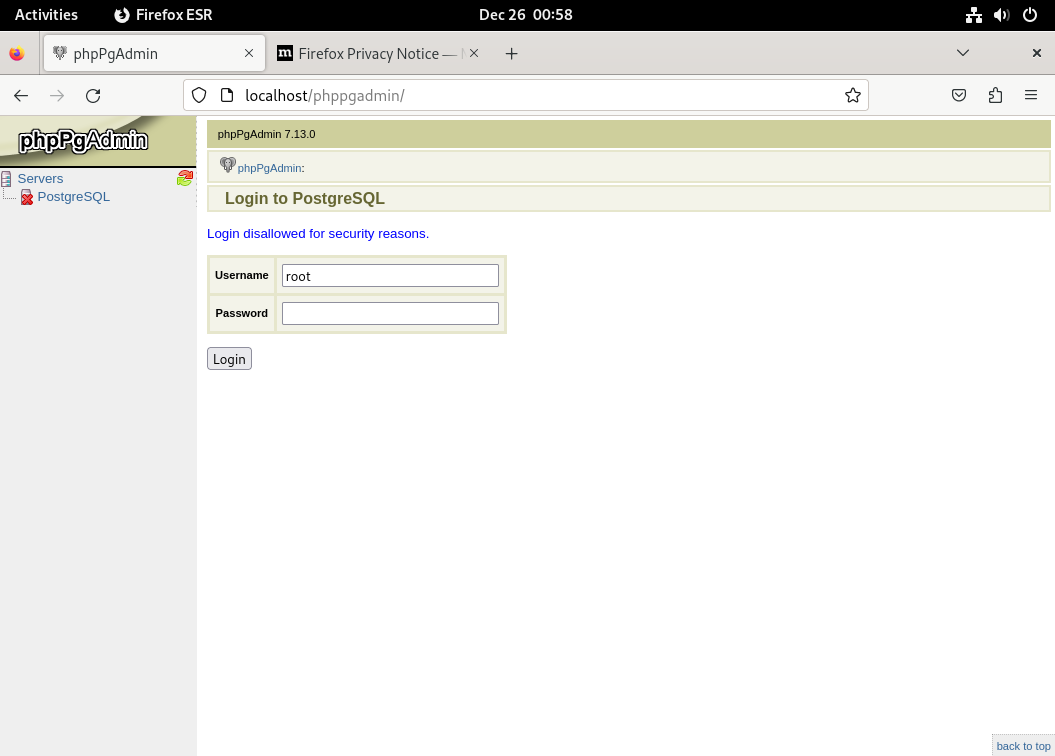
How to get in with this remains a mystery, probably have to use some commandline tool or something.
Trying to research but...
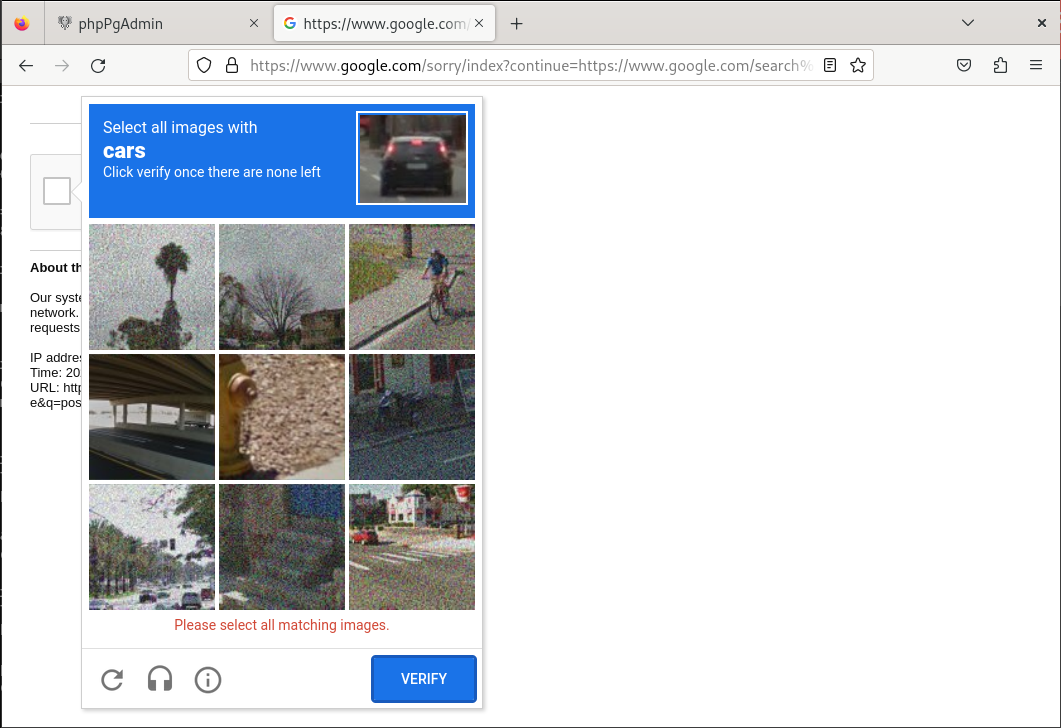
Fuck you, Google

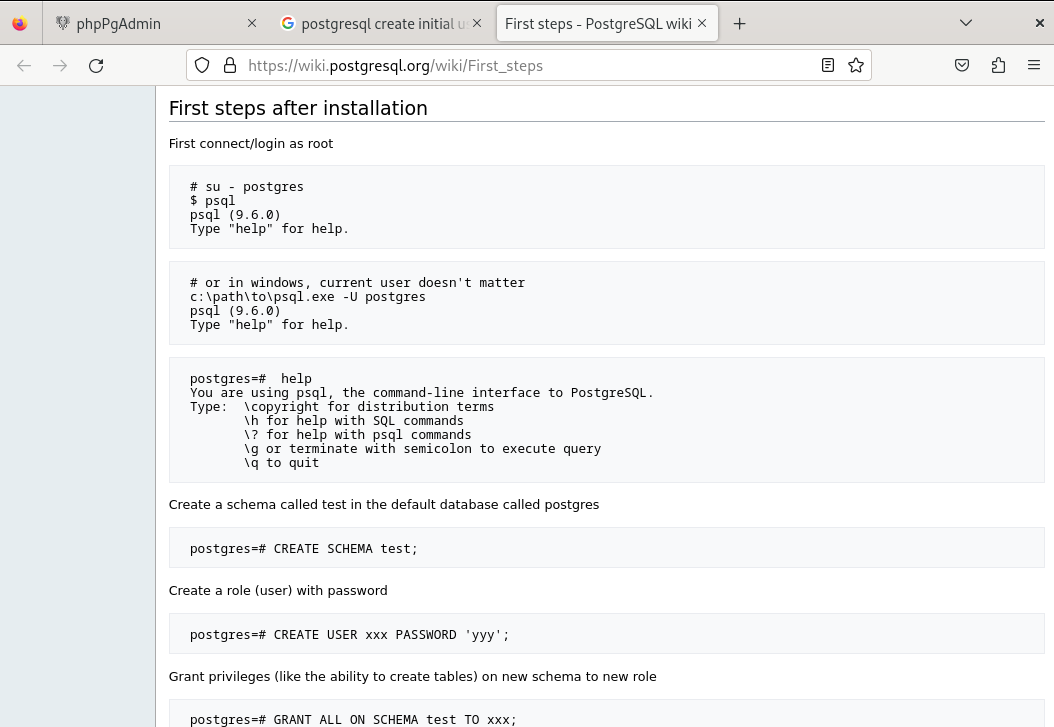
Ah, yes. All is right in the world.

Easy, right?
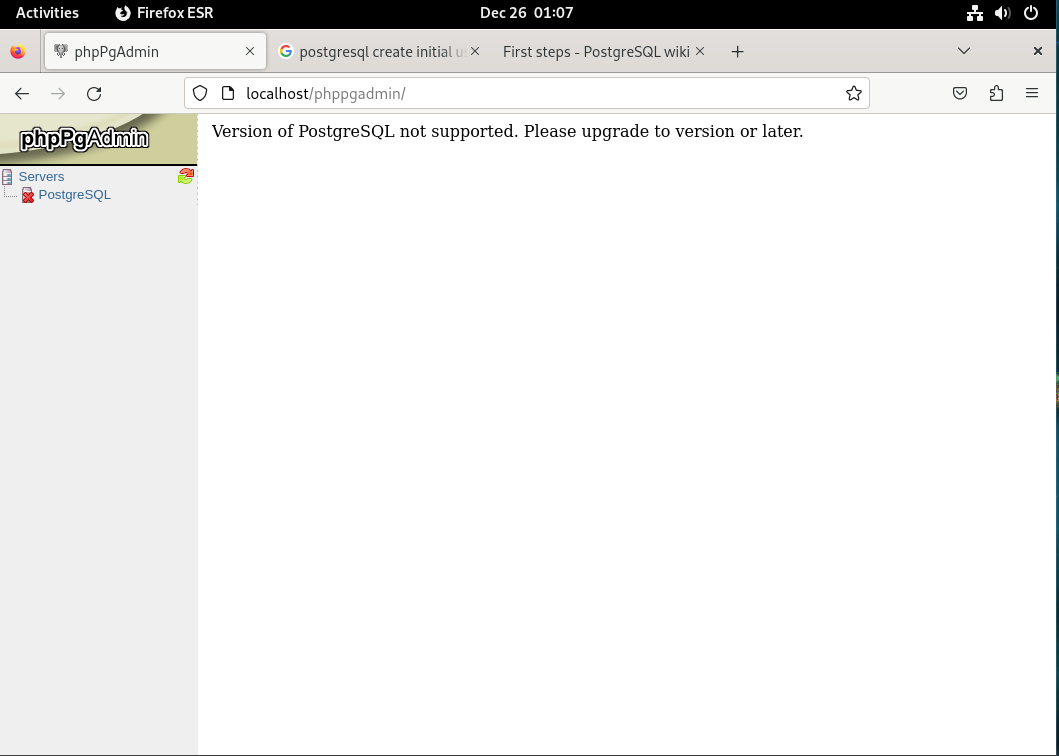
Motherfucker.
-
@Tsaukpaetra
Yes; I noped out when I looked under the covers and saw adodb in there (like PDO never happened, but it's specifically for PostgreSQL, so why an abstraction layer?)I just stick with EnterpriseDB's PgAdmin. Works well enough for what I want.
-
@Tsaukpaetra Thanks for trying to help. I found that there were some scripts provided which I had to run afterwards. A shell script had an odd path to python3, and failed there. After correcting that, python failed to find a library, ...

 No thanks.
No thanks.
-
@Watson said in From Pure Windows 7 to Linux Dual Boot:
EnterpriseDB's PgAdmin
Looks interesting. I may give it a try. Some when. Later.

-
After that eternity of hesitating, I eventually decided to do it. Purchased a fresh 500 GB SSD. Created a backup of the current 250 GB SSD with CloneZilla. Replaced the hard disk, started CloneZilla to restore from backup, and ...

Data corruption detected.
Yeah! Yeah! Yeah!
Screwed the fresh hard disk out, screwed old hard disk in again, and voilà, now I am back to WDTWTF on the old system.
E_SUCCESS!1!!
Next attempt is expected in ...
-
@BernieTheBernie
FORMAT C: /S. Only way to be sure.
-
@Parody Nah. Boot from a linux disk and use
/usr/bin/shredon the device to save every shred of data you can find.
-
@Parody Before creating the backup? That could severly speed up the process. I'll try that next time.

-
@BernieTheBernie said in From Pure Windows 7 to Linux Dual Boot:
Data corruption detected.Should have given pictures, that's not a message Windows would ever admit to.
-
@Tsaukpaetra "Your files are not quite where you left them" ?
-
@BernieTheBernie said in From Pure Windows 7 to Linux Dual Boot:
CloneZilla
The last time I had occasion (and energy) to do anything similar, I think my tools of choice were dd, 7zip and gparted.
dd and 7zip to make an image of the old drive, and then extract it onto the new drive. Gparted to expand the last partition to fill the drive.Man, do I feel old.
-
@BernieTheBernie said in From Pure Windows 7 to Linux Dual Boot:
@BernieTheBernie said in From Pure Windows 7 to Linux Dual Boot:
Oddly, RDP (xrdp on kde standard) feels a little sluggish. Much slower than the Windows 11 machine.
"A little sluggish". Uhm, actually terrible.
 Why tf is it so sluggish?
Why tf is it so sluggish?
When I move a window around on the screen, the Windows 11 machine shortly bursts data sending to about 1 Mbps. For a moment only.
But the Debian 12 machine... sends 6 Mbps for several seconds.
Why? But why?My guess is because compositing is turned on.
Windows, with both window manager and the RDP included in the system install, is smart enough to turn off compositing when using remote desktop and/or sharing the desktop, but in Linux, rdp is a niche use-case—most people either use terminal only, X forwarding over ssh, or xpra—and the window manager (I'm guessing kwin-x11 in your case) is a separate package, so it is not smart enough to turn it off.
Well, it should turn it off in a VM because it does not have anything to support hardware acceleration in the first place, but it probably isn't smart enough for that either, because the authors never tested it on a box without at least somewhat modern graphics card.
@Tsaukpaetra said in From Pure Windows 7 to Linux Dual Boot:
Weird, I don't remember that, I might have to spin up a machine to see what happens on mine...
If you use an older or simpler window manager that doesn't do compositing, or doesn't do it by default, then you wouldn't have the problem.
Apropos xpra, I used it locally for apps in containers, which is obviously fine, but the one time I tried it for actual remote access to Azure VM, it was pretty slow too. But that setup had something like two nested SSH tunnels over two nested VPNs, so the problem was almost certainly that the connection was just overall horribly slow. Since it was forwarding just the specific application, compositing didn't come into play, but lack of hardware acceleration still might have been too, the app might have been trying to use it too—in X11, most of the OpenGL APIs will be there even if there is no acceleration, it'll just be very slow.
-
@acrow said in From Pure Windows 7 to Linux Dual Boot:
The last time I had occasion (and energy) to do anything similar, I think my tools of choice were dd, 7zip and gparted.
Inj my case, it was in 2018 when I replaced the spinning rust with an SSD. But then, things were easy for me: just brought my machine into the office, where my colleagues from the service team plugged the old and new disks into some hardware from Acronis (? not sure), presssed a button, and it just worked.
-
I've used Macrium Reflect to clone SSDs before, it worked perfectly.
There used to be a free version, now there's a free 30 day trial but if you're only using it once it's fine.
-
@acrow said in From Pure Windows 7 to Linux Dual Boot:
@BernieTheBernie said in From Pure Windows 7 to Linux Dual Boot:
CloneZilla
The last time I had occasion (and energy) to do anything similar, I think my tools of choice were dd, 7zip and gparted.
dd and 7zip to make an image of the old drive, and then extract it onto the new drive. Gparted to expand the last partition to fill the drive.I almost never clone and resize partitions thanks to having had to try to fix too many Partition Tragic, Toast, and other softwares' disasters working tech support back in the day.
Make a backup, put in the new drive, wipe it, fresh install the OS on it (if it's a boot drive), reconnect the old drive (if needed), and copy back what you need. Then hope that the next time you have to do this you don't have to buy Yet Another External Adapter Or Enclosure Or Docking Bay because they added Yet Another New Physical Connection Standard For Drives and decided desktop motherboards only need one of them. :)
-
@Parody Well, yes, that's the easier way to do things. As long as the adapter is available. But I've been a student once upon a time.
Then there's the mini-laptop I wanted to backup before wiping and installing Linux on it. The disk was an eMMC. That time, live-CD and ssh joined the fun.
-
Tried it again this morning. And it worked! Now I am writing from the machine started with the new disk.
Next step: shrink the Windows partition. Well, I could of done it before, but what would happen if Windows decided to screw up? No backup available...
Afterwards, install Debian on the remaining space. And there is some 300 GB for it, so that it might be usable for a Windows machine in VirtualBox (very late step - and if that eventually fully worx, I can remove the native Windows partition).
But let's see where things will be screwed up.



-
@BernieTheBernie said in From Pure Windows 7 to Linux Dual Boot:
@acrow said in From Pure Windows 7 to Linux Dual Boot:
The last time I had occasion (and energy) to do anything similar, I think my tools of choice were dd, 7zip and gparted.
Inj my case, it was in 2018 when I replaced the spinning rust with an SSD. But then, things were easy for me: just brought my machine into the office, where my colleagues from the service team plugged the old and new disks into some hardware from Acronis (? not sure), presssed a button, and it just worked.
Something like this?

-
@acrow Looked different, but functionally something like that.
-
So I managed to install Debian, with dual boot. Yeah!
Could login as my freshly created user, changed the system local a bit, and put the task to the right side of the laptop monitor. Then restarted the machine into Windows: worked! Yeah.
Had lunch. Afterwards, I re-started the machine into Debian, and...
FAILURE!
A lot of text logs are shown on the screen, as with normal statup. Then the text vanishes, a black screen with a mouse pointer appears. And that's it. No login screen. Even after minutes.
 is that?
is that?
-
Now I re-installed Debian. Reached the "installation finished" point, system re-start, and ... got to the mouse pointer, and not beyond.
E_DONE.
The old 256 GB SDD is now back in the machine. I do not know if I will ever try a Linux dual boot again. That experience just now was fucking negative.
At least, I have now a fresh system backup available.
And the fresh 480 GB Kingston SDD may find its way as the system drive of my big old machine (if it can be connected mechanically...)
-
@BernieTheBernie The last time I set up dual boot, I put the OSes on different physical drives. Ubuntu got a 128GB drive. And Windows a 1TB, since both OSes would be able to access that one, so it would act as bulk storage also (remember to turn Fast Boot off). Which disk to boot would be selected from BIOS/UEFI.
-
@acrow Well, it is a notebook - so only one drive. Anyways,
grubdid its job correctly.
-
So I used CloneZilla this afternoon to copy the old spinning 320 GB rust disk of my "big" machine onto the new SDD. Worked immediately (ok, Windows required a reboot immediately, but that's
 ). Expanded the partition to take up the whole disk, and moved some files from the (still remaining) 1 TB Seagate spinning rust disk to the SDD.
). Expanded the partition to take up the whole disk, and moved some files from the (still remaining) 1 TB Seagate spinning rust disk to the SDD.
Wow! Visual Studio is now lightning fast! Feels much better than my Windows 11
fast! Feels much better than my Windows 11  azure experience (nota bene: I bought this machine in January 2011). But ... limited to .Net 4.8, because Windows 7. I.e. I cannot play with the features of .Net 8, or Razor pages.
azure experience (nota bene: I bought this machine in January 2011). But ... limited to .Net 4.8, because Windows 7. I.e. I cannot play with the features of .Net 8, or Razor pages.
Also updated LibreOffice to the last stable version. Opened a job application document, seems to work. Exported it to pdf, and it created a file twice the normal size. Opened that pdf in Acrobat, and ... cover letter and CV were OK, but all diplomas and references were blacked out.
Opened that pdf in Acrobat, and ... cover letter and CV were OK, but all diplomas and references were blacked out. 
So, I removed that new version and reinstalled the old version. It feels much faster than previously, too, when the files are located on the SDD.
At least, the moneyz were not wasted.
were not wasted.
-
@BernieTheBernie Grub did, but the Linux OS didn't. That's the point of putting them on different disks; switching Linuxen is a lot more stress-free when it's on its own disk.
Yes, there shouldn't be any difference in theory. But neither should a popular Linux distro fail to boot. Stuff happens.@BernieTheBernie said in From Pure Windows 7 to Linux Dual Boot:
all diplomas and references were blacked out
Any Eurion constellations on them? Well, I've seen MS Word (365) cut all pictures in half when exporting a document to PDF. There's something about those exports that's not quite as trivial as we'd like to think.
-
@acrow said in From Pure Windows 7 to Linux Dual Boot:
I've seen MS Word (365) cut all pictures in half when exporting a document to PDF. There's something about
those exportsMS Word that's not quite astrivialcompetent aswe'dMS would like to think.Filed under: They're just a small, struggling company
-
@acrow said in From Pure Windows 7 to Linux Dual Boot:
Eurion
I do not think so: I scanned all the documents myself with a vintage scanner from the early 2000ies (@Tsaukpaetra may like such hardware, too). And with LibreOffice 4.x, it just worx.